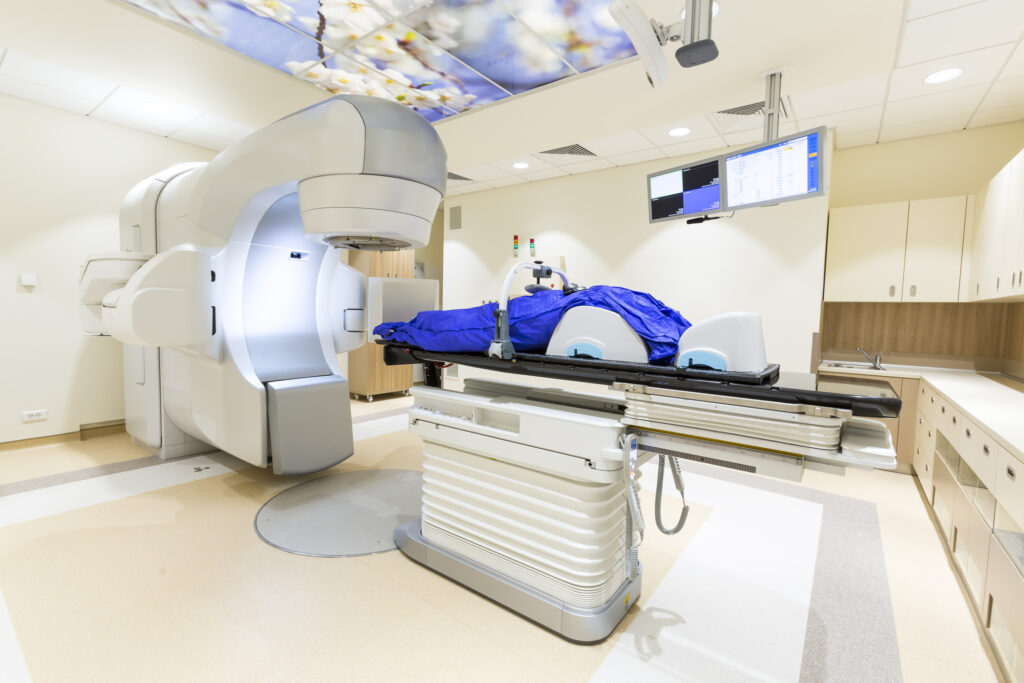Summary: Advancements in Proton beam therapy represent a significant advancement in radiation oncology, offering precise tumour targeting with reduced damage to surrounding healthy tissues. This article explores the recent developments in proton beam therapy, its benefits over conventional radiotherapy, technological innovations, clinical applications, and the future prospects of this cutting-edge treatment modality.
Introduction to Proton Beam Therapy
Cancer remains one of the leading causes of mortality worldwide, prompting continuous research into more effective and less harmful treatment modalities. Radiation therapy is a cornerstone of cancer treatment, but traditional methods often carry the risk of damaging healthy tissues surrounding the tumour. Proton beam therapy (PBT) has emerged as a revolutionary approach, providing precise targeting of cancerous cells while minimising collateral damage.
Understanding Proton Beam Therapy
Before exploring the advancements, it is essential to understand the fundamental principles of proton beam therapy. Unlike conventional radiation therapy that utilises photons (X-rays), PBT uses protons to deliver radiation directly to the tumour. Protons are positively charged particles that can be controlled to release their maximum energy at a specific depth, known as the Bragg peak. This allows for precise delivery of radiation doses to the tumour with minimal exposure to adjacent healthy tissues.
The Bragg Peak Phenomenon
The Bragg peak is a critical concept in PBT. As protons travel through the body, they lose energy gradually until they reach the tumour site, where they release a burst of energy, causing maximal damage to cancer cells. This contrasts with photon therapy, where radiation doses are highest at the surface and decrease exponentially, affecting healthy tissues both before and beyond the tumour.
Advantages Over Conventional Radiotherapy
The primary advantage of PBT lies in its precision. The ability to control the proton beam’s depth of penetration reduces the risk of radiation-induced side effects, which is particularly beneficial for tumours located near critical organs. This precision is crucial in paediatric oncology, where protecting developing tissues is of utmost importance. Additionally, PBT allows for higher radiation doses to be administered to tumours, potentially increasing the effectiveness of the treatment.
Reduced Side Effects
By sparing healthy tissues, patients experience fewer acute and long-term side effects. This improvement in the quality of life during and after treatment is a significant benefit, especially for children and young adults who may face lifelong consequences from radiation exposure.
Enhanced Treatment Efficacy
Higher radiation doses can be delivered to the tumour without increasing toxicity to surrounding tissues. This capability may lead to better tumour control and higher cure rates for certain cancers.
Technological Advancements in Proton Beam Therapy
Development of Pencil Beam Scanning
One of the significant technological advancements in PBT is the development of pencil beam scanning (PBS). This technique allows the proton beam to be delivered in a fine, pencil-like stream that can be precisely directed across the tumour volume. PBS enables intensity-modulated proton therapy (IMPT), which adjusts the intensity of the proton beams to conform to the three-dimensional shape of the tumour, further enhancing treatment precision.
Intensity-Modulated Proton Therapy
IMPT represents a leap forward in PBT, allowing for modulation of the proton beam’s intensity across different areas of the tumour. This capability results in highly conformal dose distributions, sparing even more healthy tissue and potentially improving treatment outcomes.
Integration of Advanced Imaging Techniques
Advancements in imaging technologies have significantly improved the accuracy of PBT. The integration of high-resolution imaging modalities, such as MRI and CT scans, into treatment planning allows for better delineation of tumour boundaries. Image-guided proton therapy (IGPT) ensures that the proton beams are accurately aligned with the tumour, accounting for patient movement and anatomical changes over the course of treatment.
Development of Adaptive Proton Therapy
Adaptive proton therapy is an emerging concept that involves modifying the treatment plan in response to changes in the patient’s anatomy or tumour size during the treatment course. This approach utilises advanced imaging and computational algorithms to adjust the proton beam delivery, ensuring optimal dosing throughout the treatment period.
Clinical Applications and Research
Paediatric Oncology
Children are particularly susceptible to the adverse effects of radiation due to their developing tissues and longer life expectancy. PBT’s precision reduces the risk of long-term side effects, making it an ideal option for paediatric cancers, such as medulloblastomas and other central nervous system tumours.
Case Studies and Outcomes
Studies have shown that children treated with PBT have fewer cognitive and developmental side effects compared to those treated with conventional radiotherapy. This preservation of quality of life is a crucial consideration in paediatric cancer care.
Head and Neck Cancers
Proton therapy has shown promise in treating head and neck cancers, where tumours are often located near critical structures like the spinal cord and optic nerves. The precision of PBT minimises damage to these vital areas, reducing complications such as dysphagia and xerostomia.
Improved Quality of Life
Patients receiving PBT for head and neck cancers often experience better preservation of functions such as speech and swallowing, contributing to improved overall well-being during and after treatment.
Lung and Breast Cancers
Recent studies have explored the use of PBT in treating lung and breast cancers. In lung cancer, proton therapy can minimise radiation exposure to the heart and healthy lung tissue, potentially reducing the risk of cardiopulmonary complications. For breast cancer, particularly in patients with left-sided tumours, PBT reduces radiation exposure to the heart, decreasing the likelihood of radiation-induced heart disease.
Clinical Trials and Evidence
Ongoing clinical trials are assessing the long-term benefits of PBT in these cancers. Preliminary results indicate a reduction in side effects without compromising the effectiveness of tumour control.
Proton Therapy in Combination Therapies
Research is ongoing into combining proton therapy with other treatment modalities, such as chemotherapy and immunotherapy. The synergistic effects of these combinations may enhance treatment efficacy while maintaining the benefits of reduced side effects.
Immunotherapy Synergy
There is growing interest in how PBT may enhance the immune response against tumours when combined with immunotherapy agents, potentially leading to better systemic control of cancer.
Expansion of Proton Therapy Facilities
Global Growth of Proton Centres
The high cost and technological complexity of proton therapy have historically limited its availability. However, advancements in technology and reductions in equipment size and cost have led to the global expansion of proton therapy centres. Countries across Europe, Asia, and North America are investing in PBT facilities, increasing patient access to this advanced treatment.
United Kingdom’s Investment
The UK has seen significant investment in PBT, with centres established in London and Manchester. These facilities are part of the National Health Service’s commitment to providing cutting-edge treatments to patients.
Compact Proton Therapy Systems
Advancements in Proton beam therapy have made it feasible for more hospitals to install PBT facilities. These systems reduce the physical footprint and cost compared to traditional, larger installations, broadening the accessibility of proton therapy.
Single-Room Solutions
Single-room proton therapy solutions offer a more affordable and space-efficient option for hospitals, enabling more widespread adoption of PBT technology.
Challenges and Considerations
Cost and Accessibility
Despite advancements, the high cost of proton therapy remains a challenge. The initial investment for proton facilities is substantial, and treatment costs are higher compared to conventional radiotherapy. Efforts are ongoing to reduce costs through technological innovations and increased competition among equipment manufacturers.
Insurance and Funding
Securing funding and insurance coverage for PBT can be challenging. Advocacy for broader insurance acceptance is crucial to make PBT accessible to a wider patient population.
Clinical Evidence and Long-Term Outcomes
While proton therapy offers theoretical advantages, long-term clinical evidence is still being gathered. More randomised controlled trials are needed to conclusively demonstrate the superiority of PBT over conventional therapies for various cancer types.
Research Initiatives
International collaborations and research initiatives are underway to collect data on patient outcomes, side effects, and cost-effectiveness to build a stronger evidence base for PBT.
Technical Challenges
Precision in PBT requires sophisticated technology and highly trained personnel. Ensuring consistent treatment delivery and managing complexities such as patient movement and anatomical changes are ongoing challenges.
Quality Assurance
Robust quality assurance programmes are essential to maintain the high standards required for effective proton therapy, involving regular equipment calibration and staff training.
Future Directions
Technological Innovations
Ongoing research aims to further improve the precision and efficacy of proton therapy. Developments in real-time imaging and beam delivery techniques, such as FLASH proton therapy, which delivers ultra-high doses in a fraction of a second, are under investigation.
FLASH Proton Therapy
FLASH therapy has the potential to further spare healthy tissues while delivering effective doses to tumours. Early studies suggest it may reduce side effects even more than current PBT methods.
Personalised Medicine
Advancements in genomics and molecular biology may enable personalised proton therapy, tailoring treatment plans based on individual tumour characteristics. This approach could maximise treatment effectiveness while minimising side effects.
Biomarkers and Treatment Planning
Identifying biomarkers that predict response to PBT could help select patients who would benefit the most, enhancing the personalised approach to cancer treatment.
Artificial Intelligence and Machine Learning
Incorporating AI and machine learning into treatment planning and delivery may improve the precision and efficiency of PBT. These technologies can assist in optimising beam paths and adapting to changes in real-time.
Automation and Efficiency
Automation could reduce treatment times and improve patient throughput, making PBT more accessible and cost-effective in the long run.
Conclusion
Advancements in proton beam therapy offer precise targeting of tumours with reduced harm to healthy tissues. Technological innovations such as pencil beam scanning, adaptive therapy, and integration of advanced imaging have enhanced the effectiveness and accessibility of PBT. While challenges remain in terms of cost and the need for further clinical evidence, the future of proton beam therapy is promising. Continued research and development are likely to expand its applications and improve outcomes for cancer patients worldwide.
Disclaimer
The content presented in this article is intended for informational purposes only and does not constitute medical advice, diagnosis, or treatment. Open Medscience is not a healthcare provider and does not endorse any specific medical treatments or technologies discussed herein. Proton beam therapy, while a promising development in cancer care, may not be suitable for all patients or cancer types. Treatment decisions should always be made in consultation with qualified medical professionals who can assess individual clinical needs and circumstances.
Information provided in this article is based on current research and understanding as of the publication date and may be subject to change with future developments. Open Medscience makes no representations or warranties regarding the completeness, accuracy, or reliability of the information provided. Readers are advised to consult their doctor or a specialist before making any healthcare decisions based on this content.
You are here: home » diagnostic medical imaging blog »



